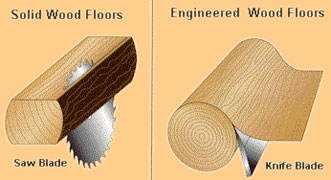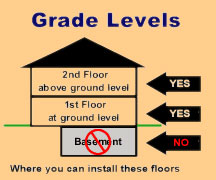For a quicker response, please send all inquiries
via info@canfloor.com or
text to
416-735-0075.
| Monday - Friday | 10:00 am - 7:00 pm |
| Saturday & Sunday | 10:30 am - 4:00 pm |
When we think of hardwood flooring we generally are talking about solid wood floors a 3/4" thick plank that is 2 1/4" wide. This is the classic strip wood floor, although it is possible to find a narrower width or a slightly thinner guage. The strips are generally in random lengths from 12" – 84". The most common wood species used for solid strip floors are red oak, white oak, and maple.
Solid wood floors are one solid piece of wood that have tongue and groove sides and come in either prefinished or unfinished styles. Solid wood floors are sensitive to moisture and it is not recommended to install these floors below ground level, or directly over a concrete slab. These floors are for nail-down installations only. You can refinish, or recoat solid wood floors several times, which adds to their appeal and to their long life. There are solid floors that are over 100 years old and are still in good condition.


All solid wood floors will react to the presence of moisture. In the winter heating months, moisture leaves the wood causing the floor to contract which leaves unsightly gaps between each plank. In the summer months when the humidity is higher the wood will expand and the gaps will disappear. If there is too much moisture it may cause the wood planks to cup, or buckle. This is why it is important when installing a solid strip floor to leave the proper expansion area around the perimeter and to acclimate the wood prior to installation.
When we talk about unfinished wood we generally think of solid wood floors. Although there are many prefinished 3/4" solid wood floors too. Unfinished solid oak floors come in several different qualities. These qualities are clear, select and better, #1 common, and #2 common. The clear has no visual blemishes or knots and is extremely expensive. The select and better quality has some small knots and very little dark graining, while the #1 common and #2 common have more knots and more dark graining. When buying an unfinished solid oak floor make sure you know which quality you are buying.
